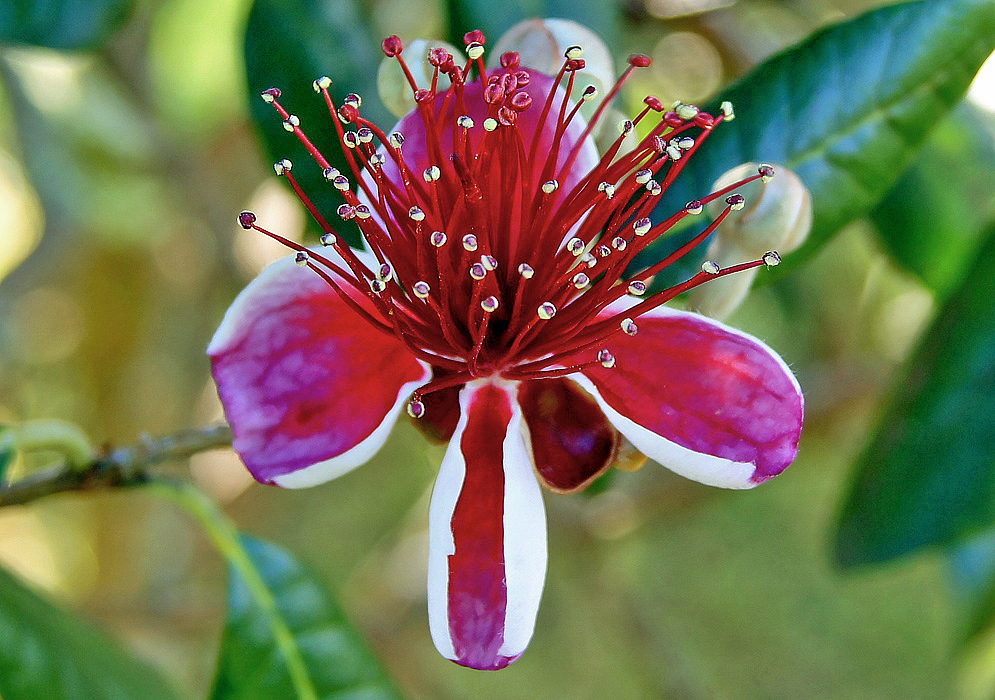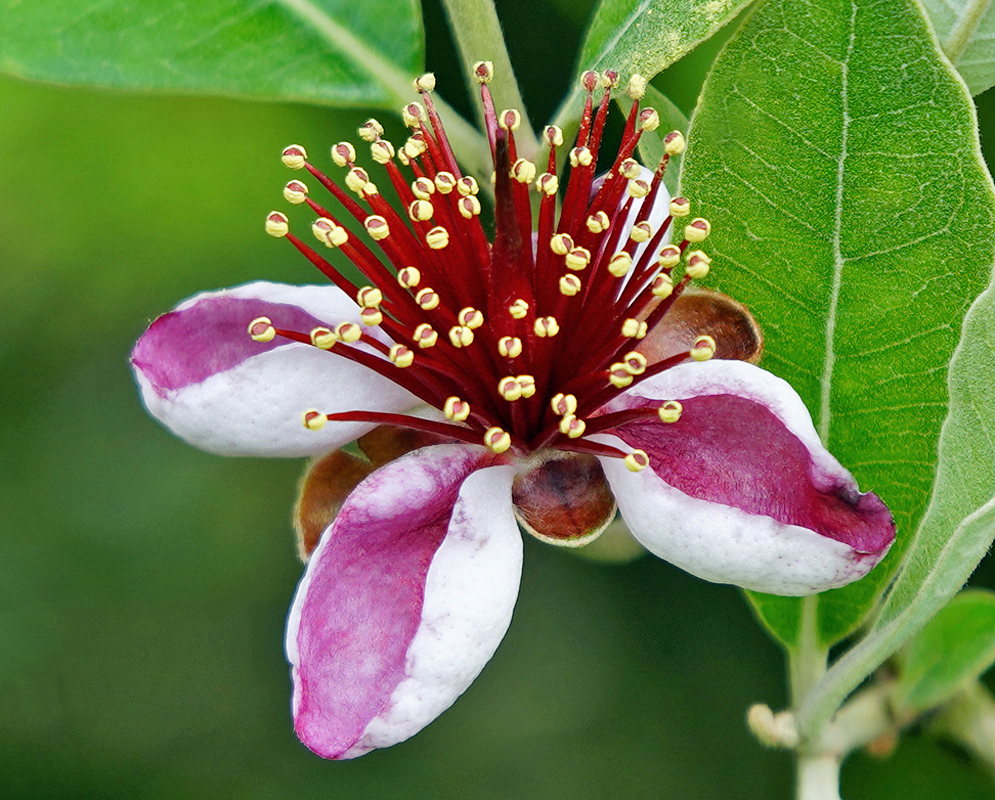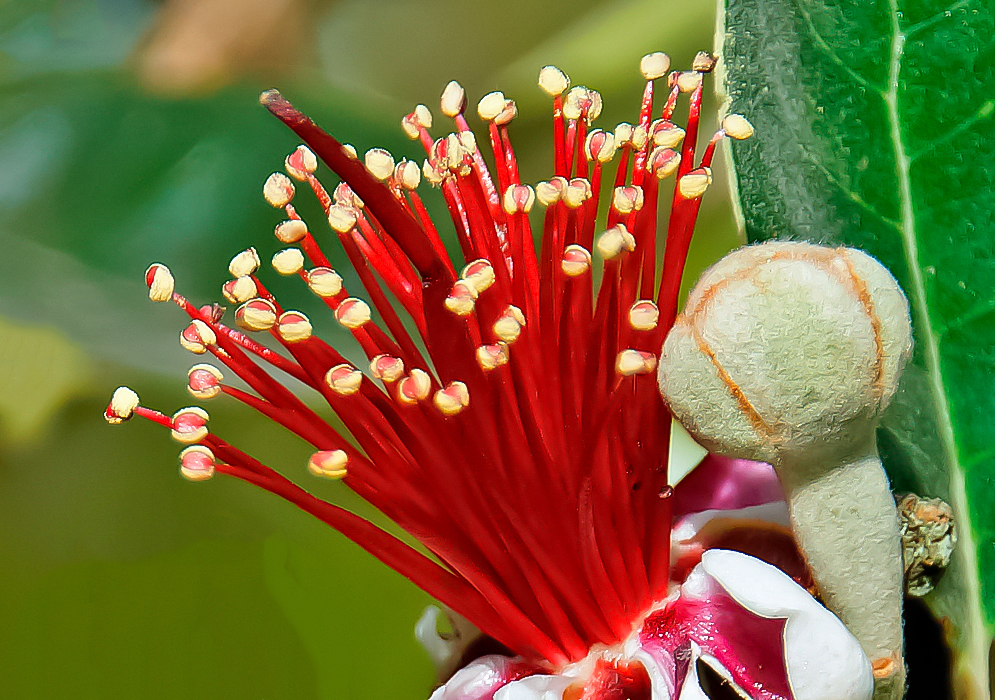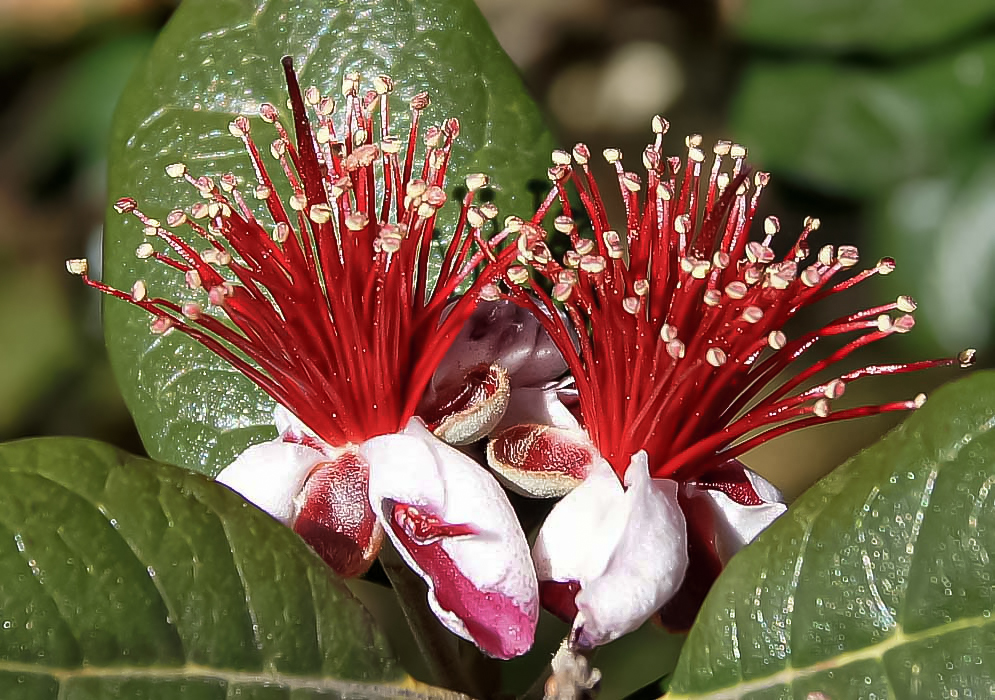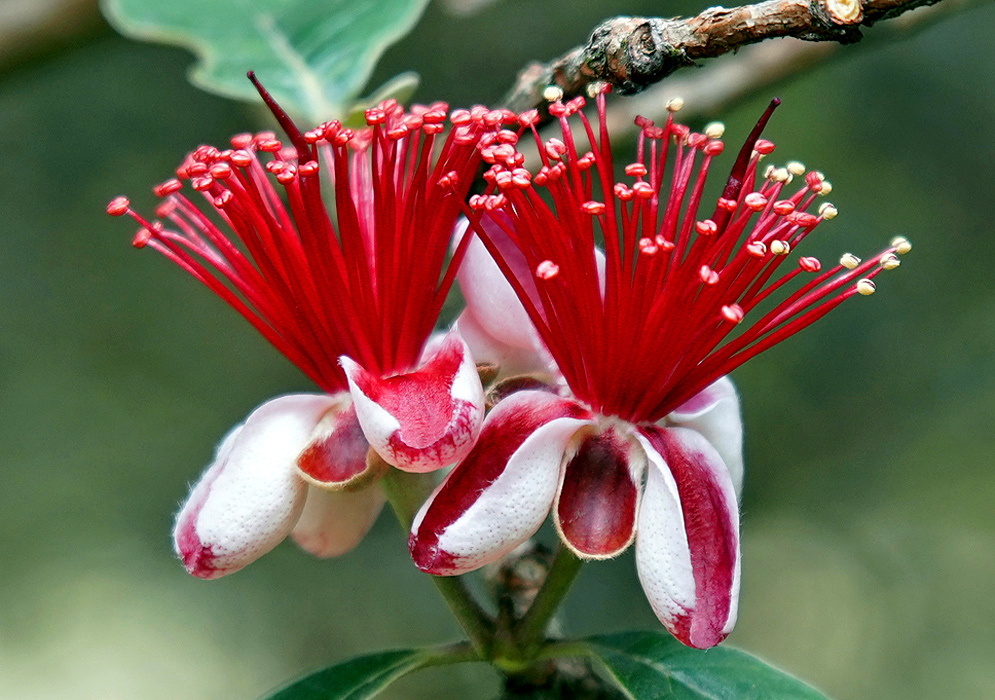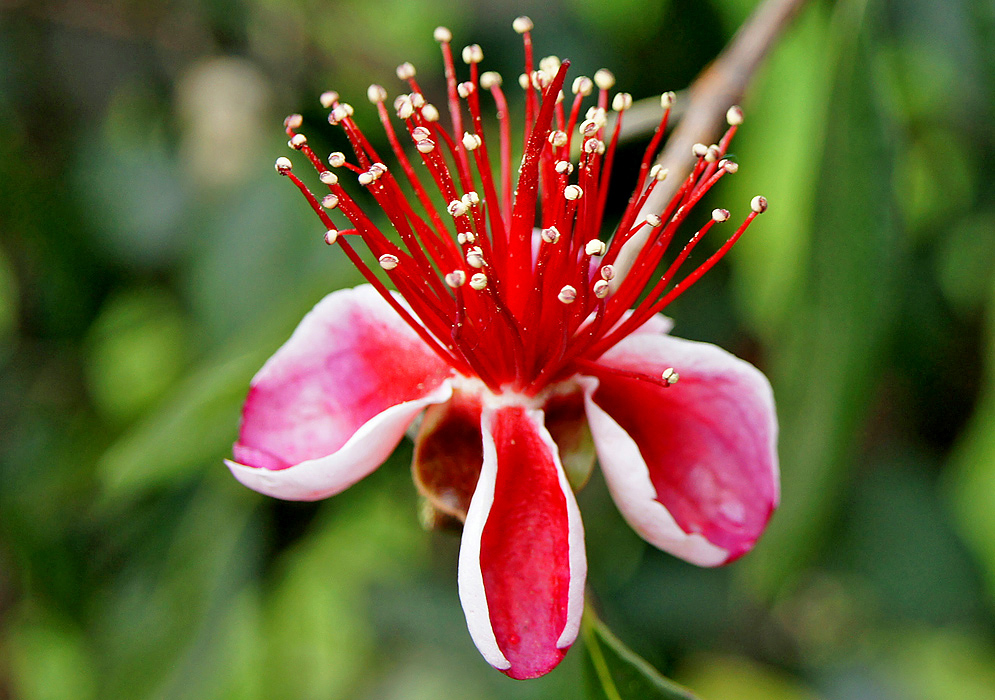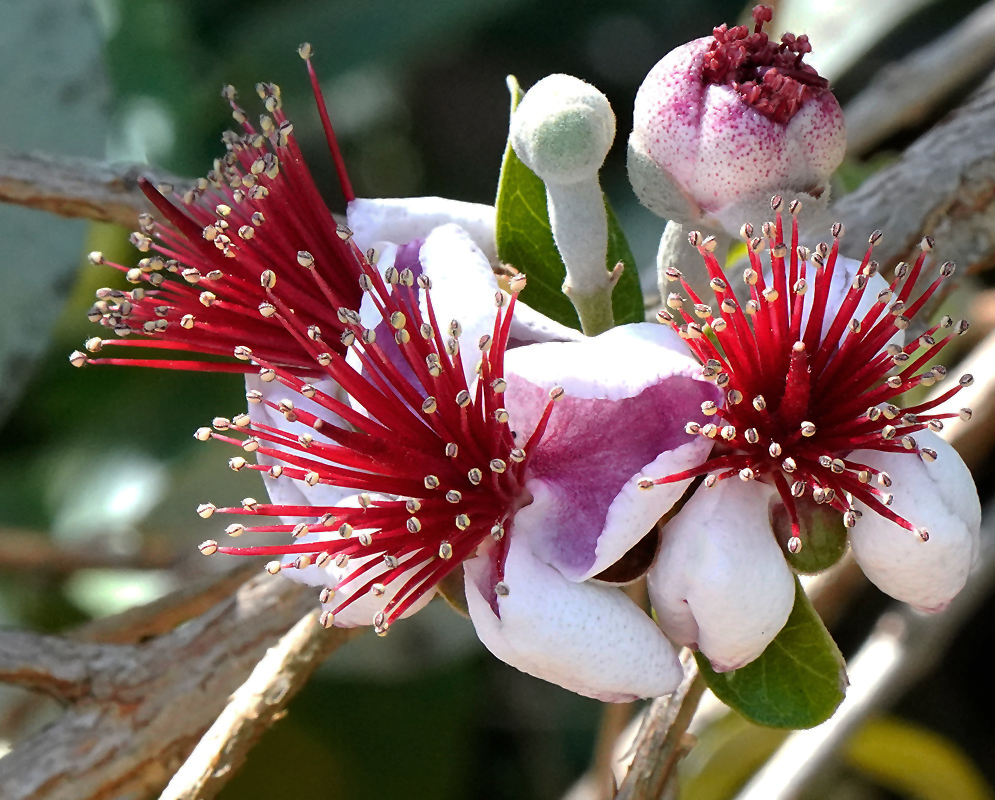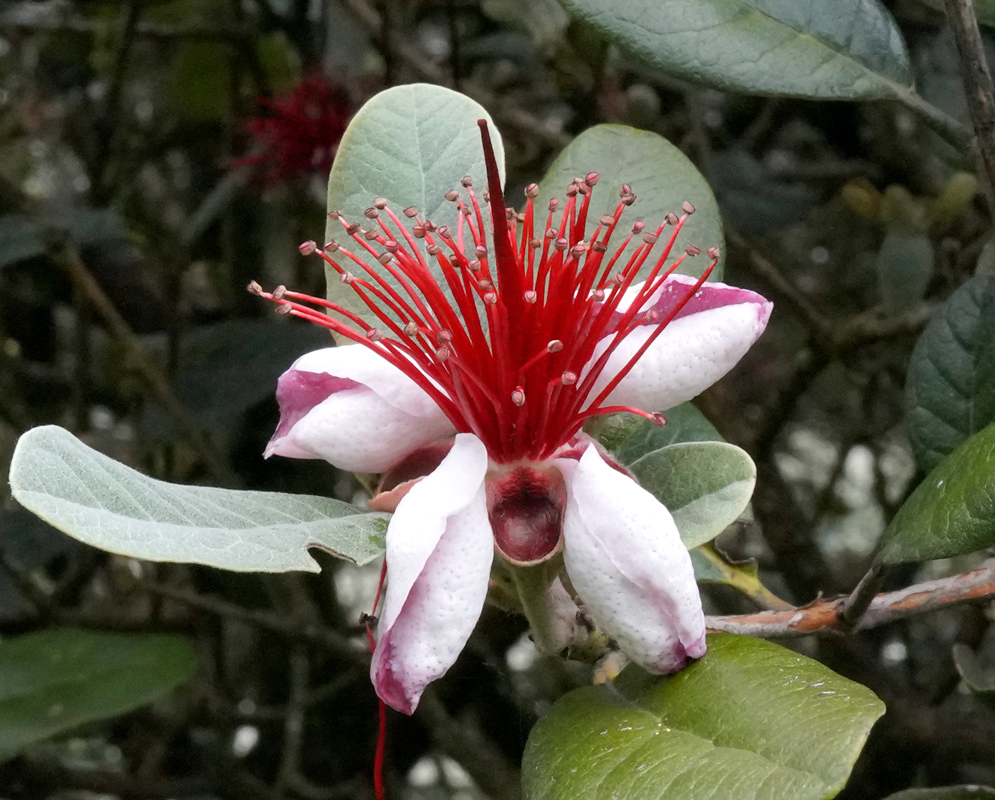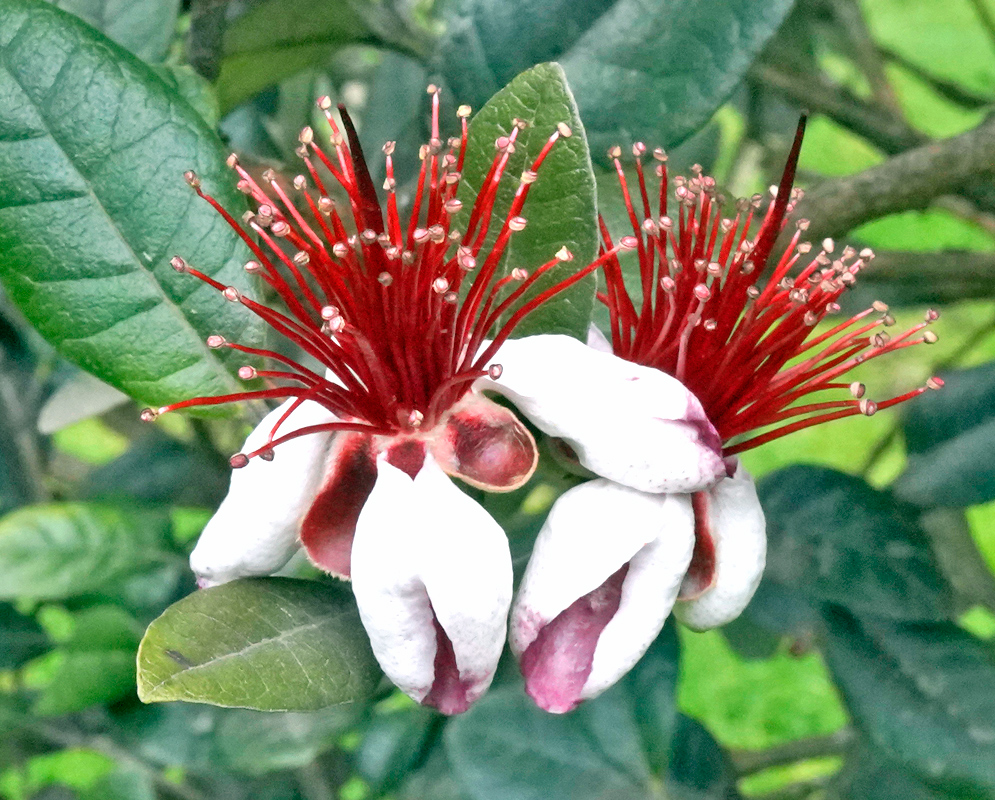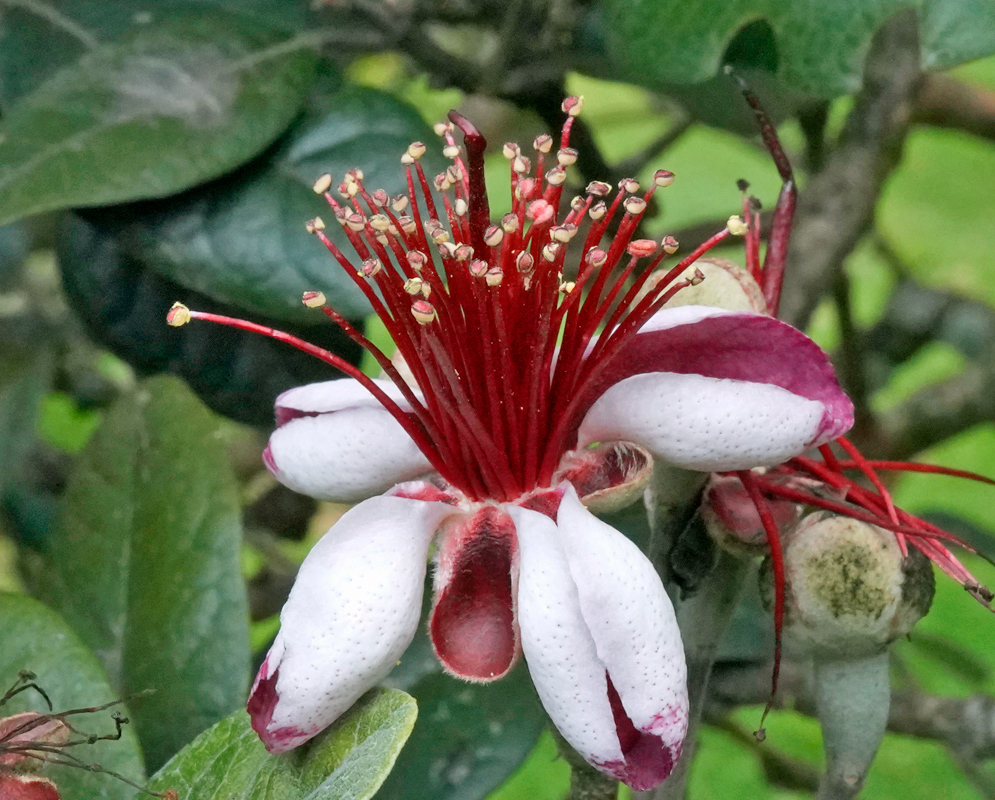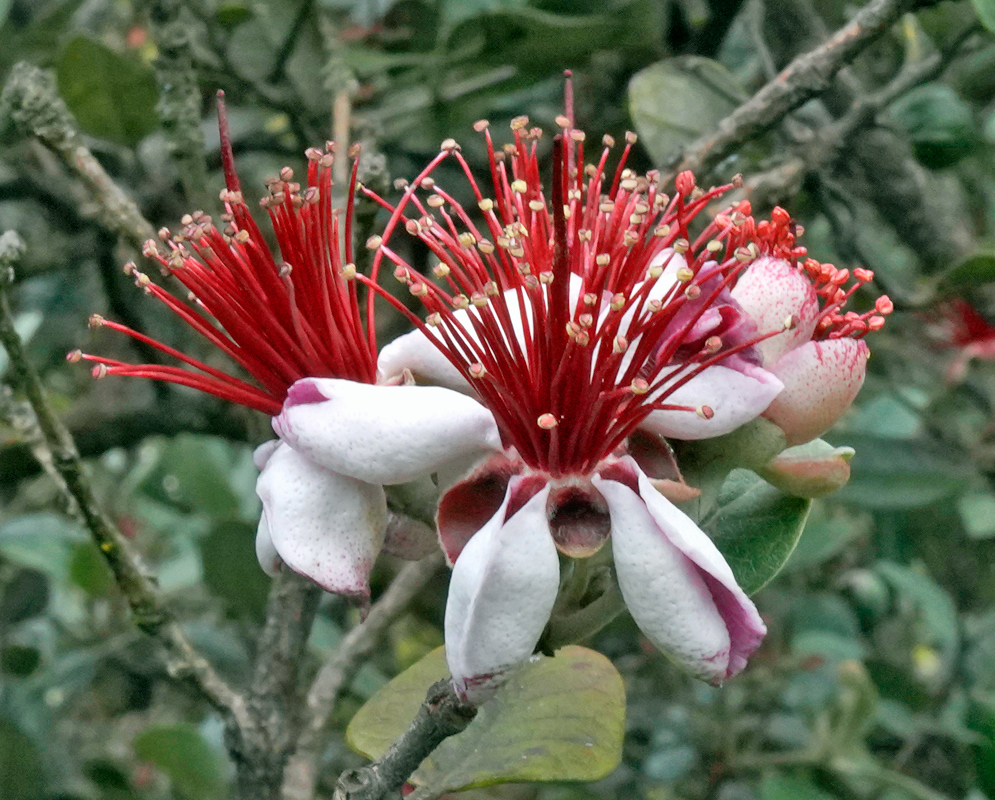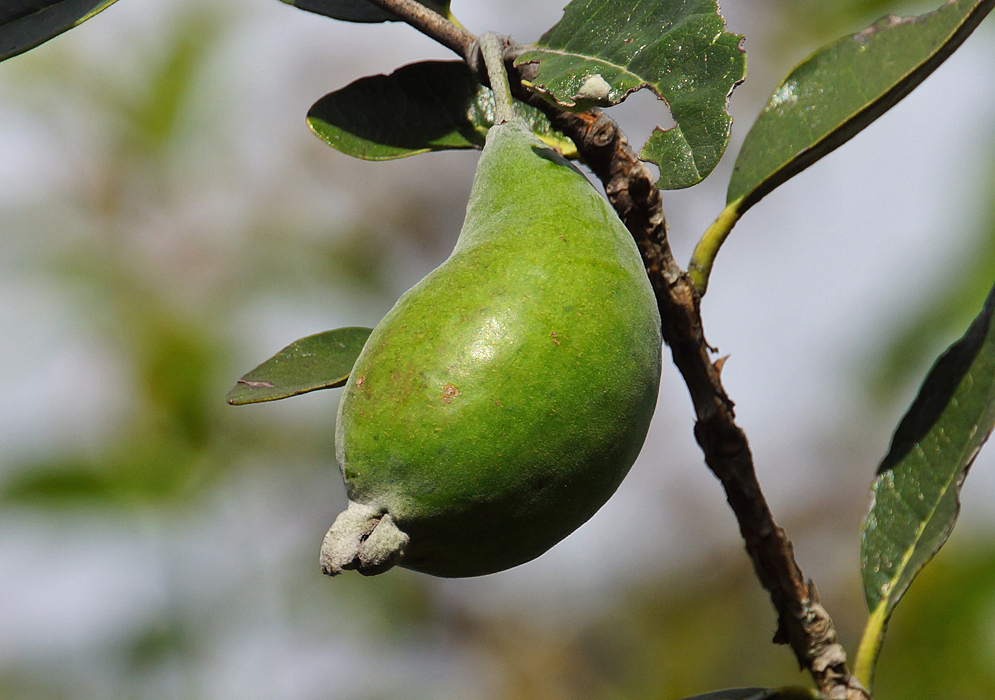This post has 11 Simple Fields-fields attached. Show fields.
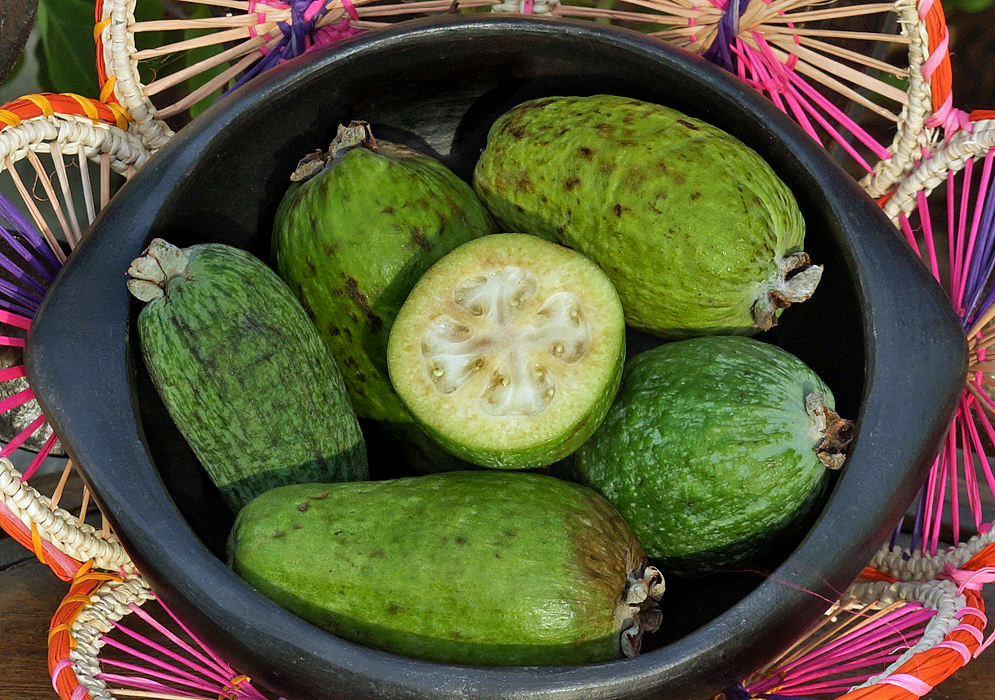
Hailing from the highlands of southern Brazil, the feijoa is a small evergreen tree has spread to various parts of the globe, including eastern Paraguay, Uruguay, northern Argentina, Colombia, and notably, New Zealand. It is a landscape plant in regions such as Texas, Florida, California, the maritime Pacific Northwest, and coastal areas of Georgia and South Carolina in the United States. The feijoa requires a certain amount of winter chill to bear fruit and is adorned with white-rosy flowers, which are pollinated by birds and insects, particularly bees. This ornamental plant's fruit is green, large egg-sized, and has a unique, aromatic scent likened to fine perfume, thanks to compounds like methyl benzoate. The fruit's pulp is similar to its relative, the guava, featuring a juicy, slightly granular texture. The feijoa is edible and rich in vitamin C, and is used to prepare beverages, jellies, ice cream, jams and can be eaten directly using a spoon or your mouth. Its fruit is recognized for its dermatological, digestive, and cardiovascular benefits in folk medicine. Like many exotic tropical fruits, it is not well known outside of the tropics, often because of shipping, handling and storage difficulties. The bulk of feijoa production is commercially centered in Colombia and New Zealand, with the fruit being cultivated between 5,000 and 9,500 feet in Colombia, and typically available in Colombian supermarkets in small quantities. In Tibasosa, Boyacá, Colombia, an annual festival celebrates the feijoa, showcasing gastronomical delights featuring this fruit. Photographed in the eastern Andes mountain range of Colombia (Cordillera Oriental).
